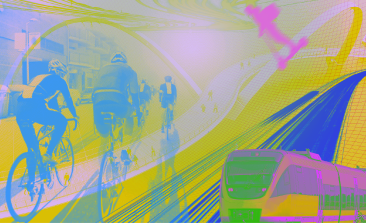0 Results for: Ökosysteme
RESET Special Feature: Satellites and Sustainability
There are thousands of satellites in orbit around our planet right now. And when it comes to protecting the environment and tracking changes in our climate, they've become indispensable too. If only there wasn't the little issue of all that space debris ... In RESET's latest special feature, we've been taking a look at the potentials - and pitfalls - of satellites and drones for a sustainable future on this planet.
Sustainable Building Revolution: This CO2 Heavyweight Needs a Rapid Transformation
The construction, heating, cooling and disposal of our buildings accounts for around 40 percent of Germany's CO2 emissions. How can the transformation succeed and what do sustainable digital solutions look like? This is the subject of our latest RESET Greenbook.
RESET Special Feature: Civic Tech – Ways out of the Climate Crisis with Digital Civic Engagement
With the help of digital tools, citizens can uncover environmental problems, collect important data and support protective measures. In our new upcoming Special Feature, we explore the question: How can civic tech solutions advance climate protection?
Blockchain and Sustainable Development – How Does It Work?
Everyone is talking about blockchain and DLT. But what exactly are they and how do they work? In RESET's latest Blockchain Special, we offer some answers to those questions and take a look at how the tech can be used for both social and ecological good.
E-Mobility: Where Is It Taking Us?
Climate change, particulate pollution, C02 emissions: If we're to make a switch from fossil fuels to clean energy, the transport sector needs to find new concepts, alternative energy sources, and innovative solutions.
How to Accelerate the Energy Transition Using Digital Technologies
Which roles can digital technologies play in the transformation of our energy system towards using 100 percent renewable energy? In the latest "Energy Transition – The Future is Networked" Greenbook, RESET.org has researched solutions and interviewed experts. Here are the results.
Digitalisation Can Advance Sustainable Agriculture – Under Certain Conditions
Digitalisation has long since arrived in agriculture. But how do these developments contribute to environmental and climate protection? We present solutions.
How Can Digitalisation Help Decarbonise the Building Sector?
Major transformations are needed to achieve the climate targets in the building sector. Here we provide an overview of the role digital technologies play in the industry.
Mobility Transition: The Multimodal and Interconnected Way of the Future
What will climate-neutral mobility look like in the future? What digital solutions are ready for a systematic mobility transition? And how do we get there? Let's take a look...








